Preserve your lions mane mushroom harvest with this simple and easy way of creating lions mane mushroom powder. The powder can be used in soups, stews, gravy, and even hot chocolate, and is a delicious and simple way to enjoy this beneficial mushroom.
Lions mane mushrooms (Hericium erinaceus, sometimes spelled erinacines) have a unique toothed, icicle appearance that distinguishes them from other mushroom species. The mushroom itself can be as small as your fist, to as large as your head when it is mature. Also known as monkey head mushroom, it can be wild foraged, you can grow it yourself, and you can find them in some Asian markets.
Traditionally lions mane mushrooms are used for their antioxidant, immune boosting, and anti inflammatory, or inflammation reducing, properties. Some research has suggested that they may also have mild nervine properties and improve brain health and cognitive function, which has been looked at in therapies for Alzheimer’s disease and mild cognitive impairment, Others have suggested them as having mild anti-anxiety benefits, or as a therapy for lingering illnesses, though not as a cure.
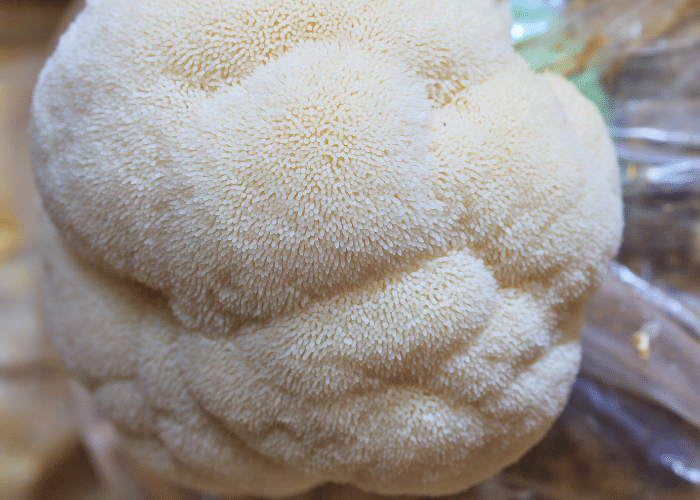
Each medicinal mushroom, like reishi, cordyceps, and turkey tail, has different antioxidant compounds, but many of the same applications. All medicinal mushrooms are great for symptoms that respond to antioxidants, like some forms of heart disease, and have mood boosting properties. However, unlike other medicinal mushrooms, Lions mane mushrooms can be used both as food and as medicine, which you don’t have to pass by the food and drug administration when you grow it yourself.
The effects of lion’s mane mushroom can vary depending on the tree(s) which it is growing on. Mushrooms growing wild, or on farmed whole logs, will be higher in certain antioxidant compounds than those grown on supplemented sawdust in bags, as the supplement encourages high growth, both of mycelium and of the fruiting body. You don’t need expensive lion’s mane supplements, since this awesome mushroom is easy to grow at home.
While the fresh mushroom is delicious lightly fried, if you have more mushrooms than you can eat, dehydrating them is a great way to preserve them. Once dehydrated mushrooms can be be used as is or powdered for versatility, and to use as supplementation in various foods. The mushroom can be left whole, when dried, if you desire to use it for extracts.
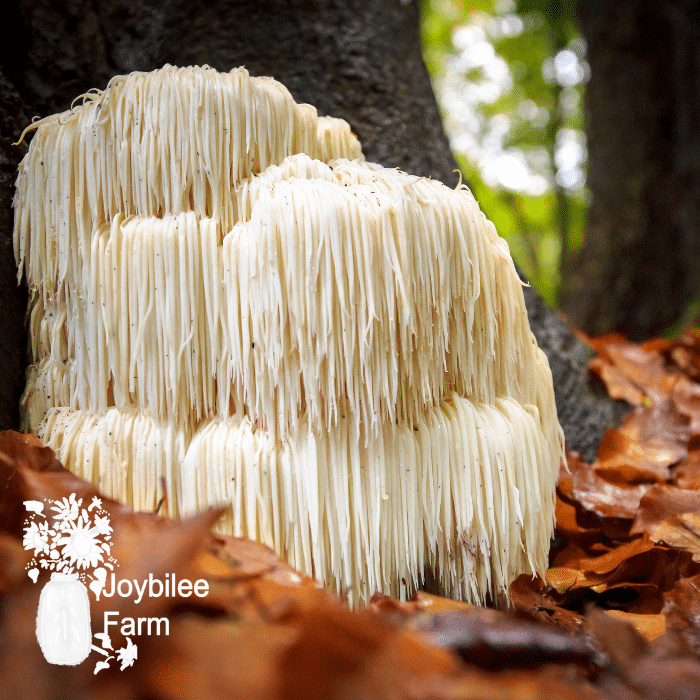
Where to Find Lions Mane:
Lions mane mushrooms can be wild harvested in many parts of the world. They have a distinctive round shape, with icicle like teeth covering the entire body of the mushroom. They can grow singly, or in clusters and are usually found on hardwood trees, including black walnut, oak, and maple.
Some Asian specialty stores carry fresh or dried whole lions mane mushrooms. In Asian markets the mushrooms are often called “Monkey’s Head” mushrooms. While others term them “pom pom” mushrooms. They are a great source of protein, particularly in dry form.
If you have space, you can also grow your own lions mane fungus using a grow kit from a reputable mushroom supplier. Or, buy the grow kit and use the sawdust spawn to inoculate your own supply of mushroom logs, or grow bags, like we did here. Log cultured lions mane take about a year to begin fruiting, while bags can fruit in as little as a month. Growing your own gives you the easiest, and funnest access to this mushroom’s beneficial effects.
Note: If you find lion’s mane wild, or grow it on logs outdoors, keep a close eye on it. Mice and squirrels love log-farmed mushrooms and will snitch as much of the harvest as they can hide in trees to dry for winter storage.
How to Dehydrate:
Mushrooms are normally up to 92% water. However, lions mane are a bit more dense and dry than button mushrooms, and they do very well with dehydrating.
If you grew the lions mane mushrooms indoors, lay the mushrooms out in direct sun for 2-4 hours before beginning to process them. This will raise the natural vitamin D levels in the mushroom. If your weather is exceptionally hot and dry, you can even dehydrate the mushrooms outdoors in the sun, for maximum vitamin D content. Vitamin D is considered a way to relieve seasonal depression, and mushrooms are one of the rare food sources of this sunny vitamin.
- Take your harvested mushroom and do a once-over for any dirt or leaves. Brush those off by hand. If there’s clinging dirt, use a bit of water to rinse the mushroom. Use light touches for any cleaning, as the icicles are fragile and will break off.
- Slice the mushroom into 1/4 inch slices with a sharp knife. Try to do it in the direction the icicles are facing, rather than across the icicles.
- Spread out on a single layer on dehydrator trays, or oven trays.
- Dehydrate in a dehydrator for 6-8 hours at 125 degrees. Or, dehydrate in your oven for 2-4 hours at the lowest temperature setting. Keep the temperature low, as some antioxidant properties can be destroyed by heat, and you want to preserve the antioxidant activity.
- After 2 hours, check the mushrooms every 15-30 minutes.
- Once the mushrooms are dry and crisp, let cool and package in glass jars or seal-able plastic bags. Mushrooms will keep longest in this form, so label and date your jar or bag and store in a cool and dry place.
The traditional dehydration method, for these mushrooms, involves pulling the mushroom apart and shredding it by hand. This technique takes a bit longer than slicing, but is useful for teas and when you want to add the mushroom to soups or sauces. The slicing technique does work if you want to make your own lion’s mane extract.
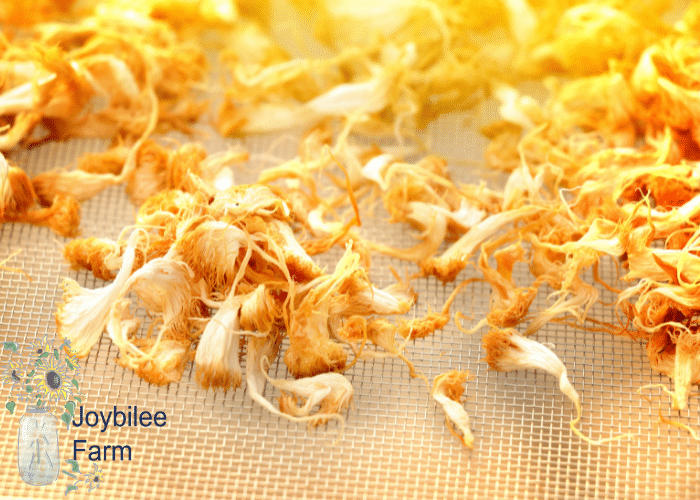
Making Lions Mane Mushroom Powder:
To make Lions mane mushroom powder, you want your mushrooms dry enough to crack cleanly when pressure is applied. They should have a crisp, dry sound, and a dry feel. You do not want leathery dried mushrooms for this, it won’t powder as well.
Use a high powered blender like a Vitamix.
For small quantities, or to test out the flavor of mushroom powder in your favorite adaptogenic recipes like this coffee, or these zoom balls, use the small blending bowl accessory with your Vitamix blender.
- Snap your dried mushroom slices into smaller pieces and place in the bowl of your blender.
- Pulse the blender with five second bursts for about twenty seconds.
- Check the fineness of your mushroom powder. If there are still larger chunks of mushroom, pulse a few more times.
- Once the mushroom is in a fine powder, pour into a small jar for storage.
- Make sure to label and date, and store in a cool, dry, place.
Mushroom powder can begin clumping if it begins to attract moisture after processing. To avoid clumping, store your lions mane mushroom powder in a two cup canning jar, with two piece lid, and only powder as much as you’ll use in a month. If you have spare silica packets, or oxygen absorbers, you can slip one or two into the top of the jar to absorb moisture and decrease the chance of clumping. However, make sure you remove the silica packets when you open the jar to begin consuming it.
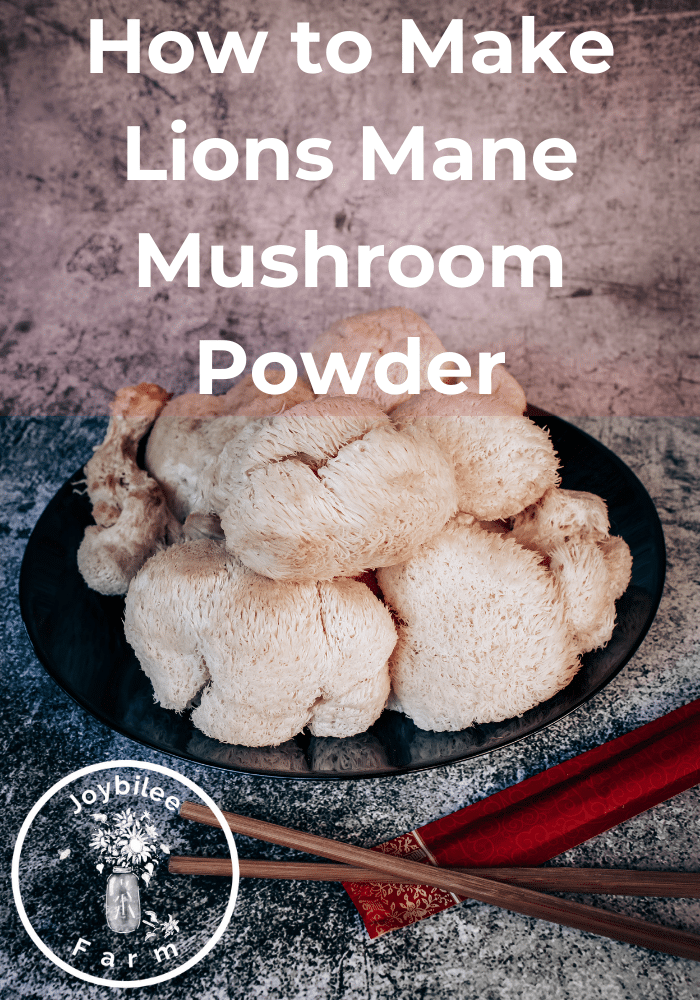
How to use lions mane mushroom powder
The best way to obtain the health benefits of mushrooms is to eat them. Lions mane mushroom powder is a versatile kitchen ingredient. Add it to baking, hot chocolate, tea, pudding, cookies, soups or stews. The flavor is mild and easily hidden. It is completely disguised when used in smoothies with fruit and greens.
Make your own powder from other medicinal mushrooms too, so you have control of the ingredients in your mushroom supplements. Mushroom powder is often put into capsules and taken in pill form for health benefits, and is used in medicinal mushroom based dietary supplements.
Add them to zoom balls or goo balls along with other adaptogens for an energy boost.
Learn more about growing mushrooms and using them for food and medicine
Sarah’s new book, Growing Mushrooms for Beginners, A Simple Guide to Cultivating Mushrooms at Home, is available on Amazon and Barnes and Noble. In this concise resource Sarah guides you step by step through growing mushrooms on logs, on straw, on wood chips in the garden, or even in Mason jars in your kitchen. The book includes instructions for growing seven mushrooms including shiitake, oyster, lions mane, garden giant/wine cap, and more. Learn the unique characteristics, flavors, health benefits, and specific growing requirements for each mushroom as well as space saving tips and recipes to get the most out of your mushroom harvest.
Get your copy of Growing Mushrooms for Beginners now.


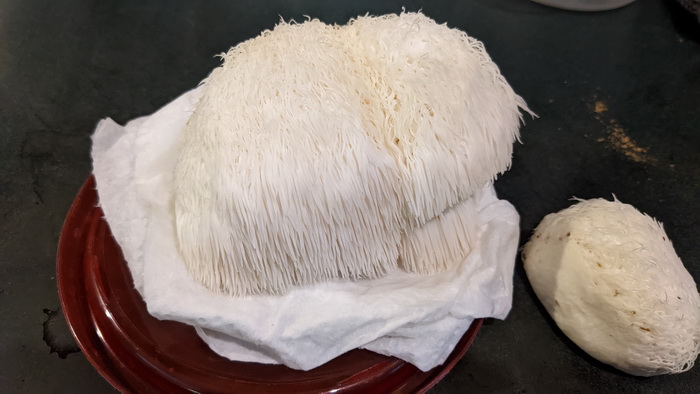
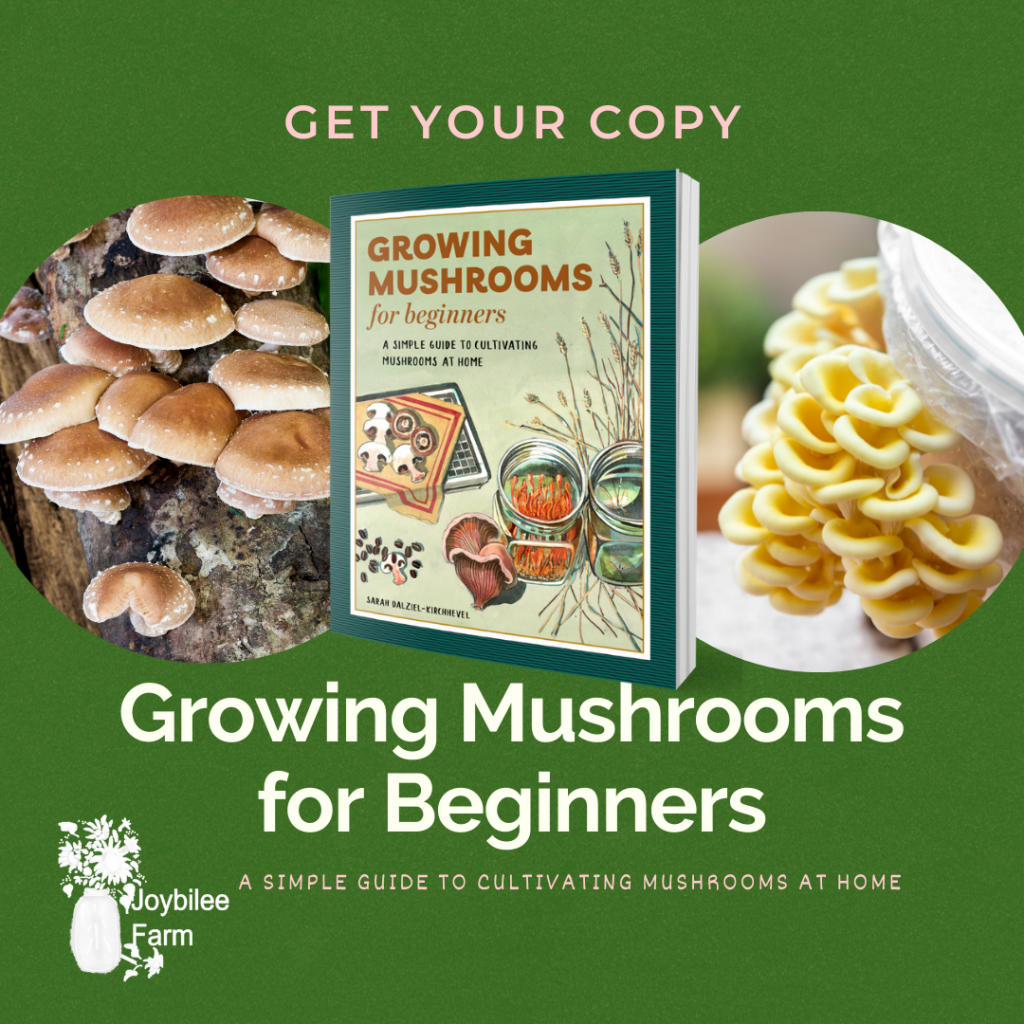


They are ground turned out fine, how much do you need to use to get the benefits daily?
Really love your article… what I wondered, can I simply use it for my smoothies as well, since I read somewhere that one has to be careful which mushroom can be eaten “non cooked” – thank you so much
Super helpful!! I’m excited to start my mycological journey!!
Hi
I was googling for content about lion’s mane mushroom, When i came across your excellent resource page.
I just wanted to say that your page helped me, I would have never found the resource with out it.
Also, my guide might make a nice addition to your page.
Either way, thanksfor putting together your list of resources. And have a great day.